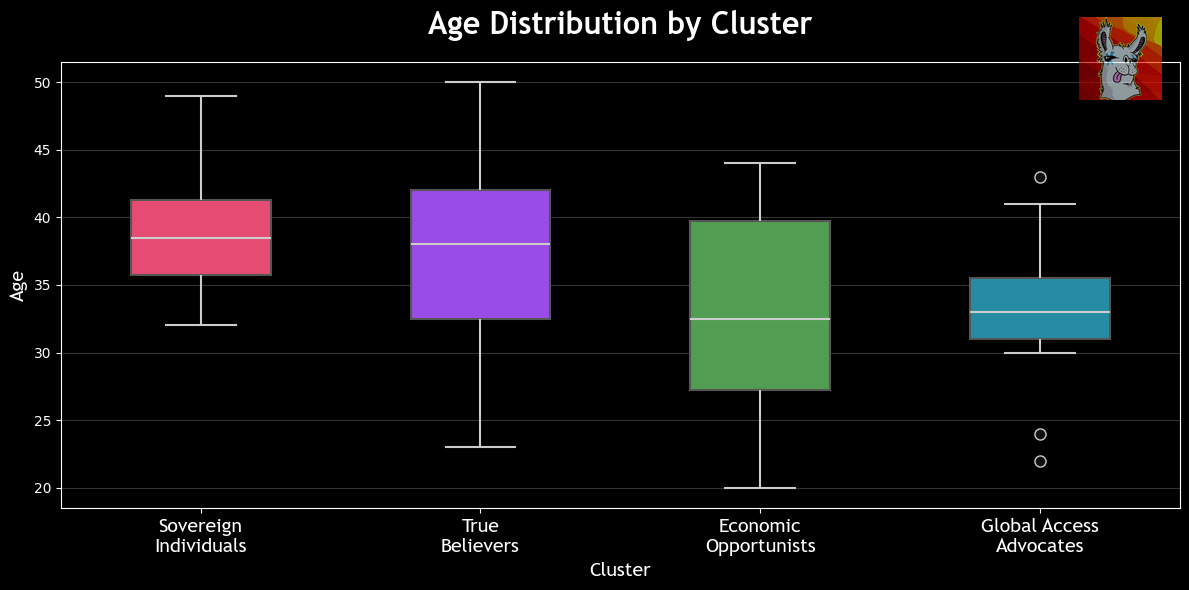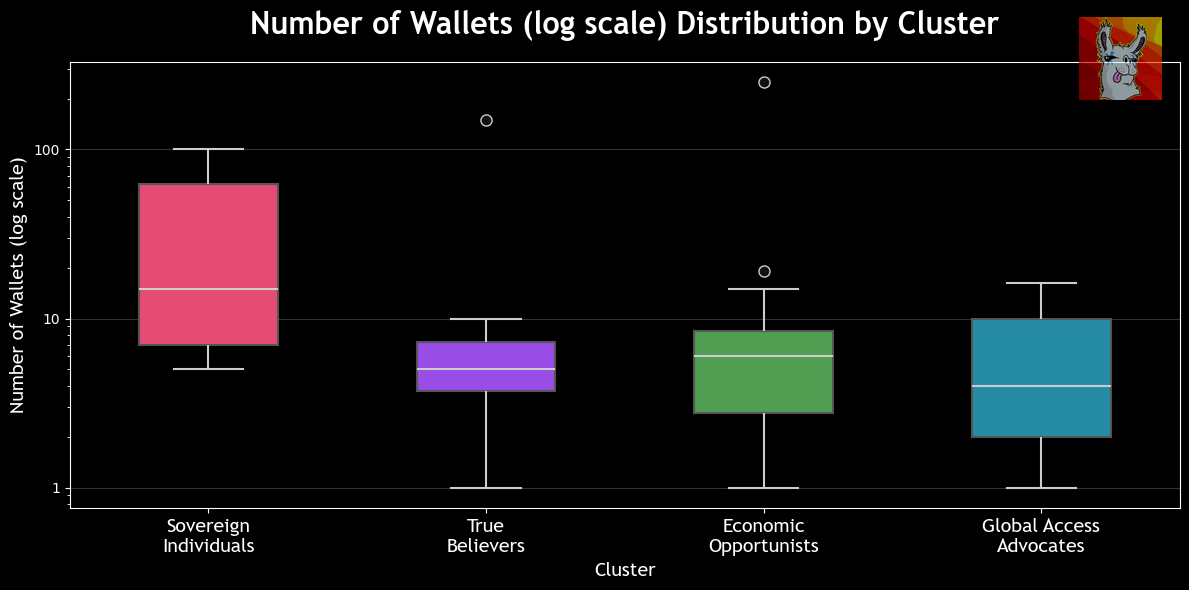Big Crypto Poll Part 3: Values 🗳️✅
Meet the four crypto tribes that stuck it out through the bear market.
Part 3 of our series dissecting the results of our Big Crypto Poll
The bear market was (and is) utterly brutal. Everybody rational pivoted to AI or other sectors long ago.
Yet some hardcore believers stuck it out. Who are we, and why are we here?
Anybody grinding through the depths of the bera must surely have been motivated by beliefs so innate, no amount of reality could shake us out without inducing a violent outburst of cognitive dissonance.
From the results of our Big Crypto Poll, we indeed see the community is strongly motivated by core values. Based on these core values, we identified four clusters of users whose belief in crypto has persisted through thick and thin.
This piece in our series explores the disparate stories of these clusters. We explain how we arrived at these four clusters, then explore their story in depth:
Sovereign Individuals
True Believers
Economic Opportunists
Global Access Advocates
Background: Values
The very first question in our Big Crypto Poll asked respondents to select the values that most attracted them to crypto. Respondents could check all boxes that applied, and the answer choices were shuffled. This question generated really good data.
On its own, the results are useful. If you are ever asked why you’re in crypto, you should simply respond that you believe in:
Decentralization 🏛️
Financial Independence 💸
Economic Opportunity 📈
We gained a lot of extra value from this question because users could select as many or as few responses as they liked. It just so happened that no respondent selected identical responses. We received loads of colorful data…
This offered a great opportunity to try to pick out signal by running some analysis to see if any obvious clusters surfaced.
Clusters
Cluster analysis is relatively easy to understand — try to assign data points to similar groupings. Reserve Protocol applied this phenomenally during a live event called ReGov at last year’s ETHDenver..
March 13, 2024: Regov Recap ⚖️🏛️
Congrats to Reserve Protocol, which just saw the market cap for their RTokens sail past the $50MM mark…
In our case, the method we utilized was to convert each response into a binary variable. Then, we ran a Principal Component Analysis to reduce the dimensionality by batching similar responses into single variable.
For instance, there was a lot of overlap among adherence to values like “privacy”, “self-sovereignty” and “censorship-resistance.” The coincidence of replies was so strongly correlated we lost very little by smushing these into a single variable we called “Sovereignty Preference.”
So too for “Economic Preference,” which combined responses to values like “economic opportunity,” “financial independence,” and “innovation potential.”
After adding a third dimension for “Global Innovation,” we arrived at three core dimensions we could use to assign respondents into one of four clusters.
We got a sneak peek at these four clusters above, but since the 3d graphic was such a pain to produce, let’s recoup our special effects budget by showing it off here again.
It’s nice eye candy, but not necessarily the best way to visualize it. We can compact it to two dimensions to better understand what’s going on here.
We’ve taken the responses to the values questions and broken them down into three principal components, values grouped around topics of sovereignty, economics, and innovation. These form three axes of the radar graph. With the four clusters you can see their mean score across these axes.
Sovereign Individuals primarily valued sovereignty
Economic Opportunists focused mostly on economic values
Global Access Advocates valued both economics and innovation
True Believers expressed affinity for all three.
However, the stats above are not necessarily the best way to understand these clusters. They reveal four very distinct groups with very different stories about how they engage with crypto.
It’s long been a trope that “Bitcoin is for haters,” referring to the fact the chain managed to serve as a neutral medium of transaction among hostile parties. Always keep in mind the cryptocurrency community is not monolithic, but a big tent of very distinct users with very different motivations.
With that said, let’s meet the four types of people we might find in crypto.

1. Sovereign Individuals
“Of course we still grinding on and on. It takes time tackle old ways so we need a hell of lot more time to implement our mission and vision”
UK-based DePIN fan and daily crypto user
Privacy, self-sovereignty, and censorship-resistance. These are the foundational values from the earliest days of Bitcoin, and users who cared primarily about these three factors formed a clear cluster.
Appropriately, we detected a clear generational split among respondents who strongest adhered to the crypto-libertarian roots. The “Sovereign Individuals” are noticeably the boomers of crypto.
If you’re confused about boxplots, recommend to reread our first article in this series!
Sovereign Individuals are by far the most inclined to split their wealth into a lot of wallets. Sovereign Individuals have an average of 33 wallets, while other clusters tended to range from 6-12 wallets.














